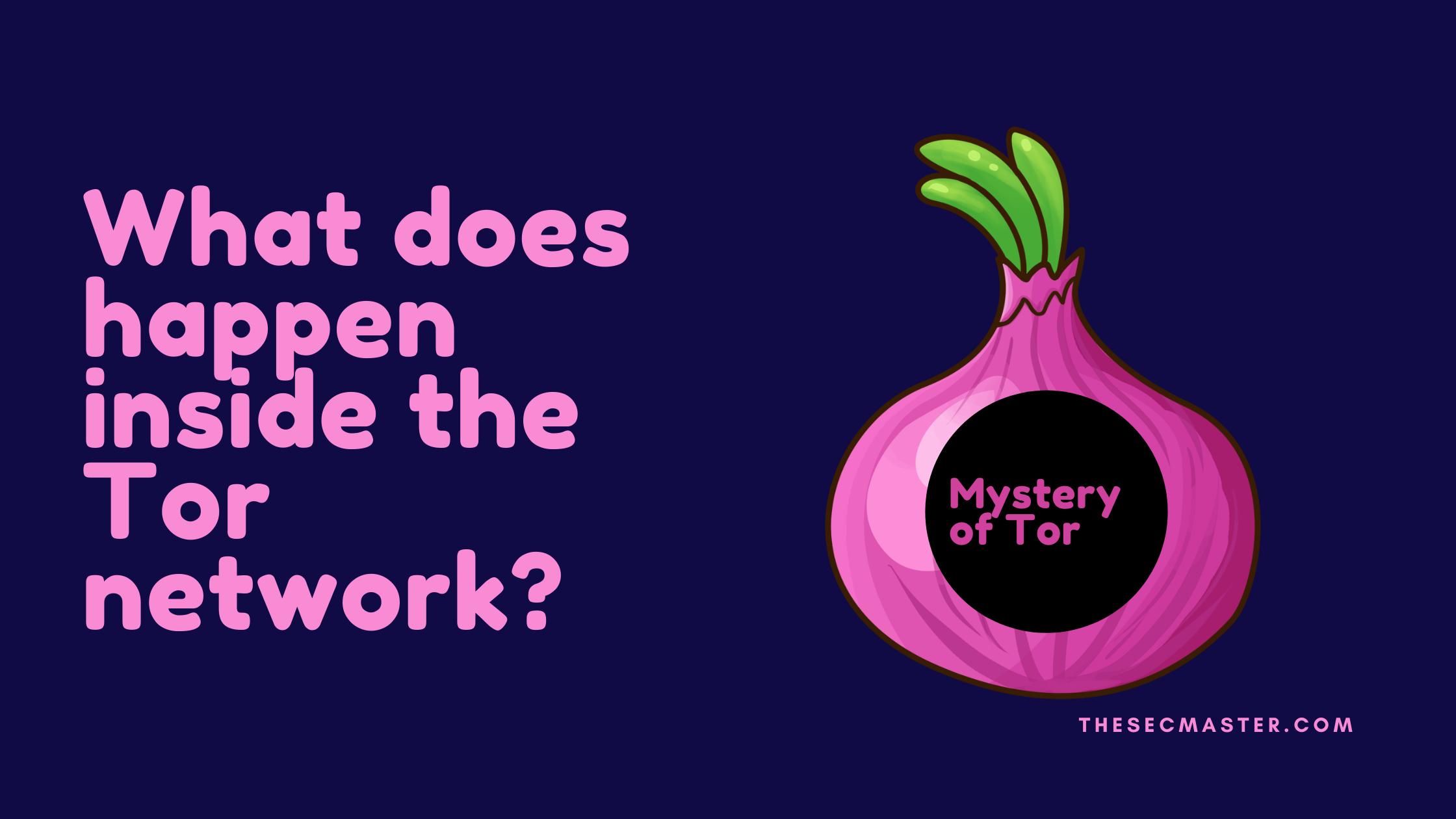Table of Contents
What Does Happen Inside the Tor Network? | How Does the Tor Network Work?
If you have ever asked this question, what makes the Tor network special? The simple answer is its anonymous nature. Tor allows communicating with users to the destination site by preserving anonymity. Tor hides the identity of both the user and the destination site from each other. Let’s break the mystery of the Tor network by learning what are hidden sites? How does the Tor network work? And, What does happen inside the Tor network?
What Are Hidden Sites?
Hidden sites are generally referees to the dark web. The term hidden came because these sites are hidden from the surface web. These sites can’t be accessed using a common browser and can’t be searched using common search engines like google and bing. A special type of browser and network is required to access these hidden sites.
Hidden sites are like any other sites running on the internet. But work only on the Tor network. These hidden sites can be accessed on the Tor network using a special browser called Tor (The Onion Router). The Tor network operates in a way completely different from the regular internet. It provides two-way anonymity. That means the user doesn’t know the real IP address of the hidden site, and the hidden site also doesn’t know the real IP address of the user. The user and the hidden site both communicate in an anonymous mode.
Hidden sites use special URLs known as onion addresses. Onion addresses are the randomly generated alphanumeric address that specifies the domain name of the hidden site, suffixed with ‘.onion’.
Example: DuckDuckGo search engine’s URL: http://3g2upl4pq6kufc4m.onion/
How to Create a Hidden Site?
We are giving theoretical heads-up about how to create a hidden site on the Tor network. The process starts with building a web server.
Build a web server like any other normal web server.
Install the Tor software on the web server to make the web server able to communicate over the Tor network.
Select two nodes on the Tor networks which would act as Introduction Points for the hidden site. Those nodes serve as the public face of the hidden site. Don’t’ presume that those nodes have a direct connection with the hidden site. To preserve anonymity, those nodes communicate through a mesh of the Tor network to reach the destination hidden site.
After the selection of Introduction Points, register the hidden site with the onion database, where it obtains a unique alphanumeric onion address and publicly registers its introduction points.
If any buddy wants to access the hidden site, they can go to the onion database and find the introduction points of the hidden site. Those introduction points take the user to the destination hidden site.
What Does Happen Inside the Tor Network?
Once the hidden site is up and running and available for user access, the user has to go through a complex process inside the Tor network that protects the anonymity of the user and the hidden site. To know the process better, it is important to know what does happen inside the Tor network. Here is the step-by-step procedure which explains how the Tor network works.
Step-by-step procedure that explains the Tor network functionality
First, the user must know the address of the hidden site. The user can know this either from internet sources or through the directory of the hidden site.
When the user tries accessing the hidden site on its Tor browser, it looks up the address in the onion database and learns about the associated Introduction Points of the onion site.
The user’s Tor browser selects a Tor node which serves as the Rendezvous Point (RP) for the connection between the user’s Tor browser and the hidden site. Rendezvous Point knows neither the user’s identity nor the hidden site’s identity. But, it becomes a relay between the user and the hidden site.
The user’s browser creates a message which has the location of Rendezvous Point and the secret key. And the browser encrypts the message using the hidden site’s public key stored in the onion database.
The user’s browser then creates a Tor circuit to the Introduction Point of the hidden site and delivers the message.
After the receipt of the message, the Introduction Point creates a Tor circuit to the hidden site and delivers the message, which has the location of Rendezvous Point.
Now at this point, both user’s browser and the hidden site will have the location of the Rendezvous Point and create a Tor circuit to the Rendezvous Point and communicate anonymously..
This might seem like a complex process, but it is necessary to create an anonymous connection between the user and the hidden site. Each time you load a site on the Tor browser, the Tor browser has to go through all these processes to load the site for you.
We hope this is a bit complicated to understand for many people. We tried our best to make you understand the process. Please make sure to contact us for any clarification and read such interesting topics like this on our site. Thanks for reading this article.
You may also like these articles:
Arun KL
Arun KL is a cybersecurity professional with 15+ years of experience in IT infrastructure, cloud security, vulnerability management, Penetration Testing, security operations, and incident response. He is adept at designing and implementing robust security solutions to safeguard systems and data. Arun holds multiple industry certifications including CCNA, CCNA Security, RHCE, CEH, and AWS Security.
